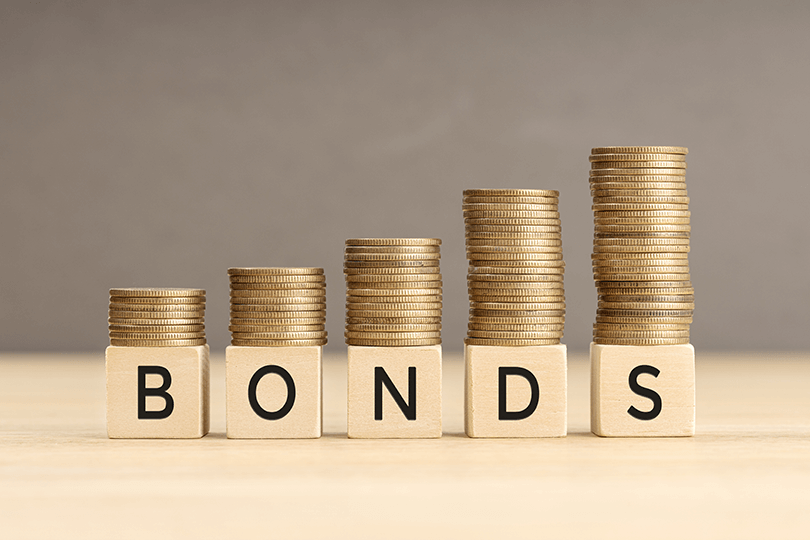Understanding bonds and putting this knowledge into use is one of the most reliable ways to generate passive income, preserve capital, and diversify a portfolio. However, with numerous bond options available in the U.S. market, choosing the right one can be overwhelming. This guide will explain different types of bonds, key factors to consider, and practical advice for selecting the best bonds for investment.
What Are Bonds?
Bonds are fixed-income securities issued by governments, corporations, and municipalities to raise capital. When you purchase a bond, you are essentially lending money to the issuer in exchange for periodic interest payments and the return of the principal amount at maturity.
Types of U.S. Bonds
Before investing, it is crucial to understand the different types of bonds available in the U.S. market:
- Treasury Bonds (T-Bonds) – Issued by the U.S. Department of the Treasury, these are considered the safest investment as they are backed by the full faith and credit of the U.S. government. They have maturities of 20 or 30 years and pay interest every six months.
- Municipal Bonds (Munis) – Issued by state and local governments, municipal bonds often provide tax-free interest income, making them attractive for investors in higher tax brackets.
- Corporate Bonds – Issued by companies to finance operations, expansion, or other projects. They offer higher yields than government bonds but come with a higher risk, depending on the issuer’s creditworthiness.
- Agency Bonds – Issued by government-sponsored enterprises (GSEs) such as Fannie Mae and Freddie Mac. They typically have slightly higher yields than Treasury bonds but still carry low risk.
- High-Yield (Junk) Bonds – These bonds are issued by companies with lower credit ratings and offer higher interest rates to compensate for the increased risk.
- Inflation-Protected Bonds (TIPS) – Treasury Inflation-Protected Securities (TIPS) are designed to protect investors from inflation, as their principal value adjusts with the Consumer Price Index (CPI).
Key Factors to Consider When Choosing Bonds
1. Investment Goals
Are you looking for income, capital preservation, or growth? Treasury bonds are ideal for capital preservation, while corporate bonds may offer higher returns.
2. Interest Rate Environment
Bond prices are inversely related to interest rates. When interest rates rise, bond prices fall and vice versa. If rates are expected to rise, short-term bonds might be a better option.
3. Credit Ratings
Bonds are rated by agencies such as Moody’s, S&P, and Fitch. Higher-rated bonds (AAA, AA) are safer but offer lower yields, whereas lower-rated bonds (BB and below) carry higher risk but potentially higher returns.
4. Yield and Duration
- Current Yield = (Annual Coupon Payment / Bond Price) × 100
- Yield to Maturity (YTM) considers the total return if held until maturity.
- Duration measures a bond’s sensitivity to interest rate changes. Higher duration means greater price volatility.
5. Liquidity
Some bonds are more liquid than others. Treasury bonds, for example, are highly liquid, whereas some corporate and municipal bonds might be harder to sell before maturity.
Practical Advice for Bond Selection
1. Diversify Your Bond Portfolio
A well-balanced bond portfolio should include a mix of Treasuries, corporate bonds, and municipal bonds. This diversification helps manage risk and optimize returns.
2. Consider Tax Implications
If you are in a high tax bracket, municipal bonds might be an excellent option since their interest is often exempt from federal taxes (and sometimes state and local taxes).
3. Ladder Your Bonds
Bond laddering involves purchasing bonds with different maturities. This strategy provides steady income while reducing interest rate risk. For example, you might buy bonds maturing in 2, 5, 10, and 20 years.
4. Compare Corporate Bonds with Similar-Rated Alternatives
Before purchasing a corporate bond, compare its yield with Treasury and municipal bonds of similar duration and credit rating to ensure you’re getting adequate compensation for the risk.
5. Use Inflation-Protected Bonds for Long-Term Investing
If you are worried about inflation eroding your purchasing power, TIPS can help protect your investments since they adjust with inflation.
6. Check the Bond’s Call Features
Some bonds can be called (redeemed early) by the issuer. If interest rates decline, issuers may call bonds early to refinance at lower rates, leaving you to reinvest at lower yields.
7. Invest in Bond ETFs for Simplicity
If managing individual bonds seems complex, consider bond exchange-traded funds (ETFs), which provide exposure to a diversified basket of bonds without requiring direct bond selection.
Example: Choosing the Best Bond Based on Investment Goals
Let’s say John, a 50-year-old investor, wants a safe, tax-efficient investment for retirement income. He is in a high tax bracket and prefers low risk.
Best Bond Choice:
- Municipal Bonds – Since John is in a high tax bracket, tax-exempt municipal bonds can provide better after-tax returns than corporate bonds of similar yield.
- Treasury Bonds or TIPS – If John is concerned about inflation, he might allocate a portion of his portfolio to TIPS.
- Bond Laddering Strategy – To ensure steady income, John can buy municipal bonds with staggered maturities.
On the other hand, if Sarah, a 35-year-old investor, seeks higher returns and is willing to take moderate risk, she might consider corporate bonds with A or BBB ratings for better yield.
Final Thoughts
Selecting the best U.S. bonds for investment depends on individual financial goals, risk tolerance, and market conditions. By understanding bond types, evaluating key factors like interest rates and credit ratings, and applying strategies such as diversification and bond laddering, investors can build a resilient fixed-income portfolio.
Whether you seek safety, income, or inflation protection, the right bond investments can help achieve financial stability and long-term growth. Always consult with a financial advisor before making investment decisions, especially if you’re new to bond investing.

